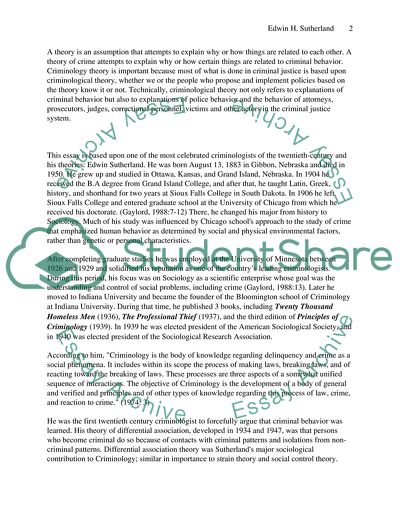Cite this document
(Edwin Hardin Sutherland and His Theories in Theoretical Criminology Coursework - 1, n.d.)
Edwin Hardin Sutherland and His Theories in Theoretical Criminology Coursework - 1. https://studentshare.org/sociology/1717515-edwin-h-sutherland
Edwin Hardin Sutherland and His Theories in Theoretical Criminology Coursework - 1. https://studentshare.org/sociology/1717515-edwin-h-sutherland
(Edwin Hardin Sutherland and His Theories in Theoretical Criminology Coursework - 1)
Edwin Hardin Sutherland and His Theories in Theoretical Criminology Coursework - 1. https://studentshare.org/sociology/1717515-edwin-h-sutherland.
Edwin Hardin Sutherland and His Theories in Theoretical Criminology Coursework - 1. https://studentshare.org/sociology/1717515-edwin-h-sutherland.
“Edwin Hardin Sutherland and His Theories in Theoretical Criminology Coursework - 1”. https://studentshare.org/sociology/1717515-edwin-h-sutherland.


